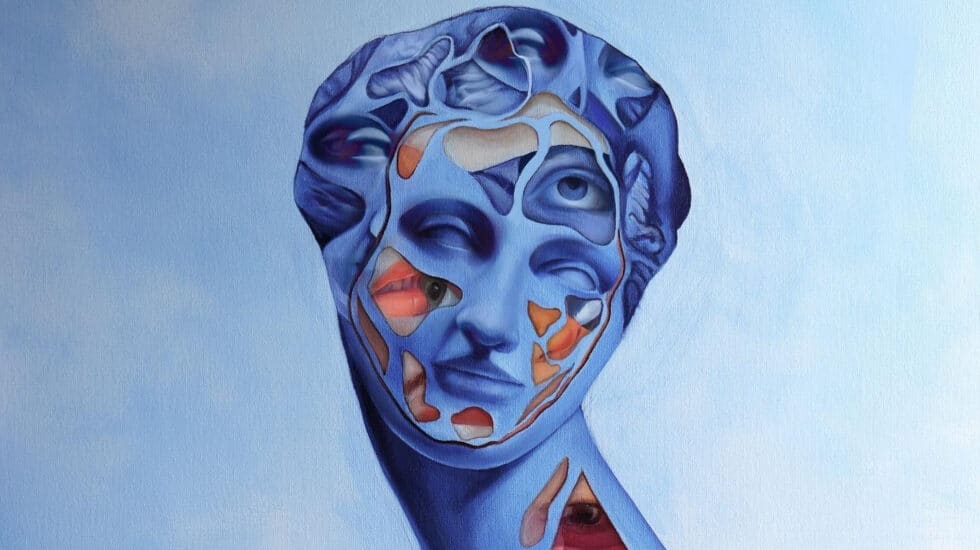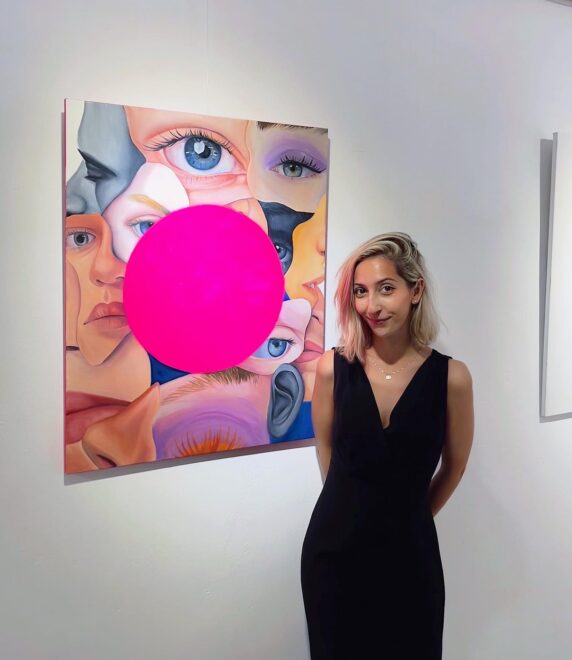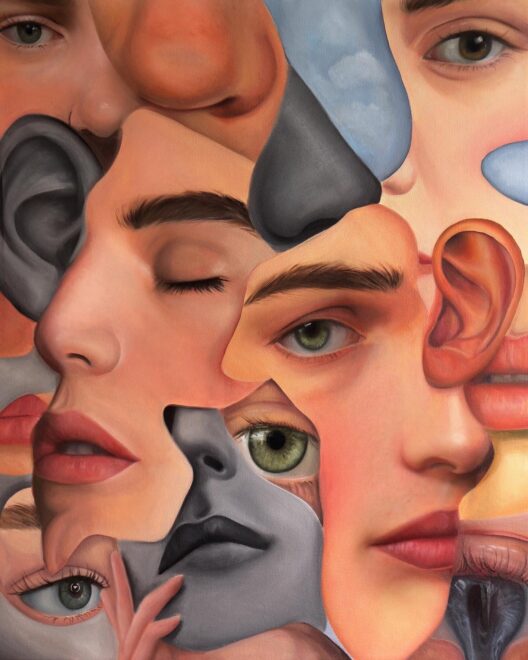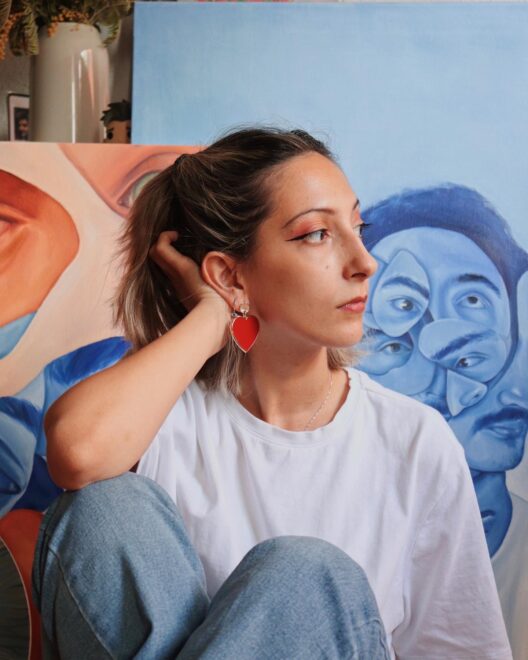

Cover illustration for “Imposter Syndrome”
How not to feel like an impostor to someone who, at the age of 25, managed to gain a foothold in the demanding world of art? This is the question the artist from Valladolid is trying to answer. Celia Gallego in his first book Imposter Syndrome (Dashboard). Self-taught and professional, Gallego has nurtured and carefully guarded his passion for art for as long as he can remember, despite the fact that his academic background led him to other paths. Graduated in journalism from the University of Valladolid, the young artist has made a name for herself in the artistic circle with her brushwork, and her communication skills have enabled her to post her work to a wide audience on social media.

The artist shares her processes, guidelines and reflections on art with her over 300,000 TikTok followers. “I always try to show that you live well, you are happy, you draw and this is your passion. But in the end, it’s a job like any other. The fact is that artists work with feelings, so the wear and tear is more sentimental than physical.” As for this chimera, which means “living off art,” Gallego admits that this is often not practical. “It’s not impossible, because there are months that I live completely from this, suddenly I sell two paintings and at the same time I have for a month and I even have something left, but there are months that I don’t do, this is a constant a tug of war with great uncertainty.”
Self-taught and influential person
A woman from Valladolid started exploring the possibilities of publishing her work online when she saw what an Italian was doing on YouTube. Marcelo Barenghi. “I started writing speed painting with the digital camera my parents had, until one day I said, “Hey, why don’t I talk about art too?” After all, I’ve been reading a lot on this subject because I’m trying to fill in the gaps I’m having from not having a race. I thought that what I learn might also be useful for people who have not studied fine arts either and are interested. At first it was perceived as strange, but after more than 10 years on the networks, not so much anymore.
This oddity that Gallego talks about, a product of his self-taught state, is one of the reasons the impostor syndrome haunts her from the start. In fact, when the French publisher Dashbook contacted her about writing the book, she didn’t believe it at first. “It took me a month to respond because I thought it wasn’t serious.” For this reason, seeing himself free to write about anything, he decided to investigate this particular case. “When I start figuring out what impostor syndrome is, I feel very identified.”

The artist admits that she first started reading self-improvement books on the subject, but claims that “they were all embarrassing”, directly citing such arbitrary reasons as perfectionism or self-demanding. “I thought that maybe we needed to go back even further, I began to engage in introspection and a test of conscience, I remembered that two weeks after the selection, my math teacher said what profession she sees each of us in. He told me, “Celia, since you want to live in the world of show business, I see that you live on the street.” At the time I was angry, but over time I realized that it didn’t go in one ear and out the other, it stayed inside me. Every time I felt smaller, that phrase echoed in my head.
Lack of referrals
Personal reasons are important in understanding each case, but it is also necessary to recognize sociological issues in order to get to the bottom of this phenomenon. The impostor syndrome was first discussed in 1978 after research by an American psychologist. Pauline Clans and his partner Suzanne Imes. What struck Gallego the most when he read about this study was that it tended to affect more women than men. “Over the years, when more research began to be done, especially on men, it was said that there were no sex differences, but the reasons for this were not investigated. Until the 1920s, women couldn’t study anatomy in fine arts schools, they couldn’t paint nudes or portraits, they could only paint minor arts, still lifes, still lifes… Seriously, you’re telling me now that artists grew up without referents. no more reason to feel like an impostor?”

The artist recalls how hard it was for her to find female artists in her early years. Over time, he realized that their lives had been deliberately erased from history. “Historical canon Gombrichwhich has been considered the standard for so long, does not include a woman, does not go out or Frida Kahlo”. Luckily, I found art critics on social media such as Sarah Rubio or Evgenia Tenenbaumwhich are concerned with rediscovering referents that have been hidden.
book therapy
Celia Gallego assures that this process was similar to an intensive therapy session. “I realized that it was not my fault. One thing self-help books insist on is that you are to blame for being who you are, so you need to work on yourself if you are unhappy, it is because you want to. But no, it’s the same as when you were five years old, your father, your mother, your uncle, your grandmother or your teacher told you that you are a worthless person and worth nothing, and the same thing because of this. Those of us who go to therapy go after people who haven’t gone yet. After all, we only pay for sinners.
The artist claims that after writing this book, she feels a little less an impostor, something that she continues to live with, but that she managed to remove so that it does not appear when she pleases.
Source: El Independiente